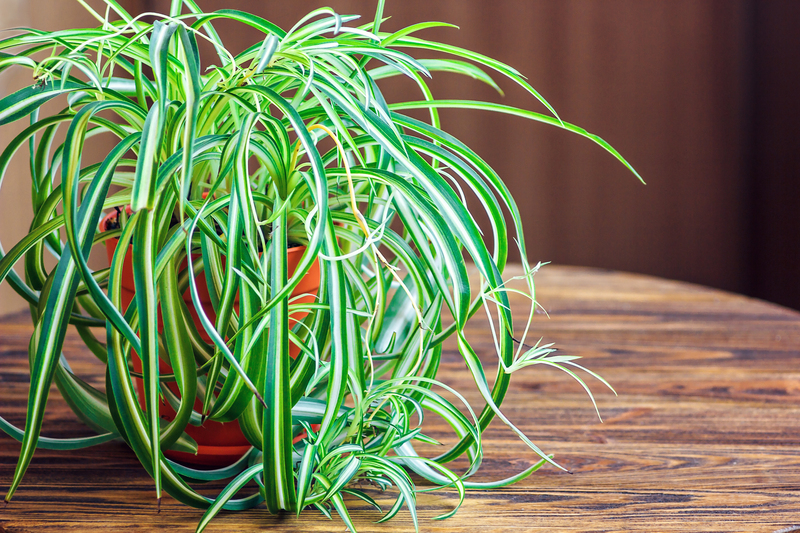Planning a Garden with Child Safety in Mind
Posted on 25/06/2025
Designing a safe and enjoyable garden environment for your family is a rewarding project for any parent or caregiver. When you have children at home, creating a child-friendly garden not only enhances their connection with nature but also provides a secure place for them to play, learn, and grow. In this article, we'll guide you through the essential steps of planning a garden with child safety in mind, highlighting practical strategies and creative ideas to keep your outdoor space both beautiful and safe.
Why Child Safety Should Be a Priority in Garden Planning
Gardens are wonderful places for exploration, learning, and play. However, the outdoors can also pose certain hazards for young children if not thoughtfully designed. Child-safe garden planning ensures that potential dangers are minimized, fostering an environment where curiosity can thrive without unnecessary risks.
- Reduce the risk of accidents associated with water features, sharp tools, and hazardous plants.
- Encourage safe outdoor activities that support physical and emotional development.
- Establish boundaries and supervision guidelines.
- Promote healthy habits by introducing children to nature and gardening.
Key Considerations for Designing a Child-Friendly Garden
Every family and garden space is different, but there are some universal factors to consider when planning a garden with children's safety in mind:
1. Location and Layout
Begin by assessing your garden's layout. Observe traffic patterns, sun exposure, and any existing natural features like slopes or trees. Keep sightlines clear so you can supervise children from a distance. For smaller yards, you might want to create multi-functional zones--one for play, another for planting, and perhaps a quiet corner for relaxation.
- Dividing the garden into zones helps organize activities and adds clarity for children.
- Use low hedges, raised beds, or picket fences as gentle boundaries rather than harsh obstacles.
- Pathways should be wide, smooth, and slip-resistant, ensuring easy mobility for little ones.
2. Choosing Safe and Durable Materials
Every element in your garden--paths, patios, decking, and play equipment--should be made of materials that are robust yet gentle on young hands and knees.
- Install non-slip surfaces on paths and decking to reduce falls.
- Avoid sharp-edged pavers or loose gravel that can be choking hazards.
- Opt for sand, bark mulch, or rubber matting in play areas for safe landings.
- Treat wooden structures to prevent splinters and use child-safe paint or sealants.
3. Fencing and Securing the Garden
Installing proper fencing is one of the most effective safety measures in any child-friendly garden plan.
- Fences should be high enough to deter climbing, with tightly spaced boards to prevent crawling through.
- Lockable gates are essential to control access to streets or neighboring properties.
- Check that all boundaries are free of sharp nails, protruding wires, or splintering wood.

Safe Plant Choices for a Family Garden
When planning your garden with child safety in mind, the selection of plants is just as important as any structural element. Some common garden varieties can be toxic if ingested or cause skin irritations.
Plants To Avoid in a Child-Safe Garden
- Oleander, foxglove, and lily-of-the-valley: Highly poisonous if eaten.
- Yew, laburnum, and monkshood: Contain toxic compounds.
- Rhododendron and azalea: Potential hazards for children and pets.
- Pokeweed, castor bean, and deadly nightshade.
If you're unsure about a plant, consult a reputable nursery or local extension office before purchasing.
Child- and Pollinator-Friendly Plant Alternatives
- Sunflowers and marigolds: Colorful and non-toxic, loved by pollinators.
- Nasturtiums: Edible flowers that are safe and add a peppery taste to salads.
- Peas, beans, and strawberries: Delicious, easy-to-grow snacks for curious gardeners.
- Lavender, rosemary, and chives: Fragrant, non-toxic herbs ideal for sensory exploration.
Water Safety in the Family Garden
Ponds and water features add beauty and tranquility to any backyard, but they can be dangerous for young children. When planning a garden that prioritizes child safety, take into account these guidelines:
- Avoid deep ponds and fountains if you have young children.
- If you already have a pond, use secure mesh covers or install a lockable safety barrier.
- For water play, consider shallow splash pads or sand and water tables, which offer stimulation without risk.
- Always supervise children near any water feature, regardless of depth.
Toxin-Free Pest and Weed Control
Traditional pesticides and herbicides often contain chemicals that can be harmful if touched or inhaled. Opt for organic, non-toxic alternatives to protect your family, your pets, and garden pollinators.
- Use companion planting techniques (like marigolds to deter aphids).
- Encourage beneficial insects such as ladybugs and lacewings.
- Apply homemade natural sprays using safe ingredients like neem oil or diluted dish soap.
- Maintain healthy soil to minimize weed growth and disease.
Safe Play Zones in Your Child's Garden
Designate specific play zones where children can be creative and active. Thoughtfully incorporating play equipment fosters exercise, imagination, and social skills.
Ideas for Safe Play Areas
- Sandpits or digging beds: Fill with clean, play-grade sand for hours of construction fun.
- Mud kitchens: Encourage sensory play and learning about natural materials.
- Miniature vegetable gardens: Assign a patch for your child to grow their own plants.
- Stepping stone paths: Great for balance, hopping, and games.
Ensure that play equipment is age-appropriate and secured to the ground. Regularly check for wear, rust, and loose bolts on swings or climbing frames.
Introducing Garden Responsibilities to Children Safely
One of the joys of planning a garden with child safety in mind is that it makes it easier--and safer--for children to get involved. Provide child-sized tools with soft grips and rounded edges, and show your child how to handle them properly.
- Always supervise tool use and store tools securely when not in use.
- Encourage your child to water plants, plant seeds, and help harvest vegetables with guidance.
- Teach the importance of washing hands after gardening to reduce the risk of ingesting soil or bacteria.
Protecting Children from Sun and Insects
Outdoor safety doesn't stop at physical hazards. When planning a child-friendly garden, consider protection from sun, insects, and allergies.
- Install shade elements like pergolas, umbrellas, or shade sails over play zones and seating areas.
- Select plants that minimize pollen exposure if allergies are a concern.
- Encourage the use of wide-brimmed hats, sunglasses, and sunscreen on sunny days.
- Grow natural insect-repellant plants such as lemongrass, lavender, and mint around seating areas.
Regular Maintenance and Safety Checks
Regular garden maintenance is crucial to long-term child safety. Create a routine to check for and remove hazards:
- Pick up fallen branches, sharp stones, and garden waste.
- Secure loose paving slabs and repair fencing promptly.
- Check for hazardous insects like wasps or spider nests around play areas.
- Review your plant list annually to ensure no dangerous species have appeared or been introduced by birds or wind.
Fostering Child Independence While Ensuring Safety
Gardening with children is not just about eliminating risk; it's about teaching and empowering them to explore responsibly. Involve your child in the planning process. Let them help select plants or design a layout for their play area. Clear communication of boundaries and rules--like which areas are off-limits, or when supervision is needed--helps them develop independence with confidence.
Garden Safety Rules for Children
- Never eat any plants or berries without adult approval.
- Stay within sight of an adult supervisor.
- Wear gloves when digging or helping with gardening chores.
- Wash hands after touching soil, plants, or garden tools.

Enjoying a Beautiful and Safe Family Garden
With the right planning, your family garden becomes a vibrant, secure haven for learning, relaxation, and play. Child safety in garden design is an ongoing commitment, evolving as your children grow. By mindfully selecting materials, plants, and features, you create a space that will support your child's adventures for years to come.
Share your garden plans with friends and family to gather even more ideas for keeping outdoor play both creative and secure. For more tips on child-safe landscaping and family gardening inspiration, explore our other guides!
Final Thoughts: Designing with Child Safety in Mind
Planning a garden with child safety at the forefront means more than simply removing hazards--it's about creating opportunities for family fun, nature discovery, and hands-on learning in a secure setting. Whether you have a small urban courtyard or a sprawling backyard, intentional choices will give your children the freedom to explore the wonders of nature with peace of mind.
Start your child-safe garden design today and watch your entire family reap the rewards of a safer, greener, and more joyful outdoor living space!

